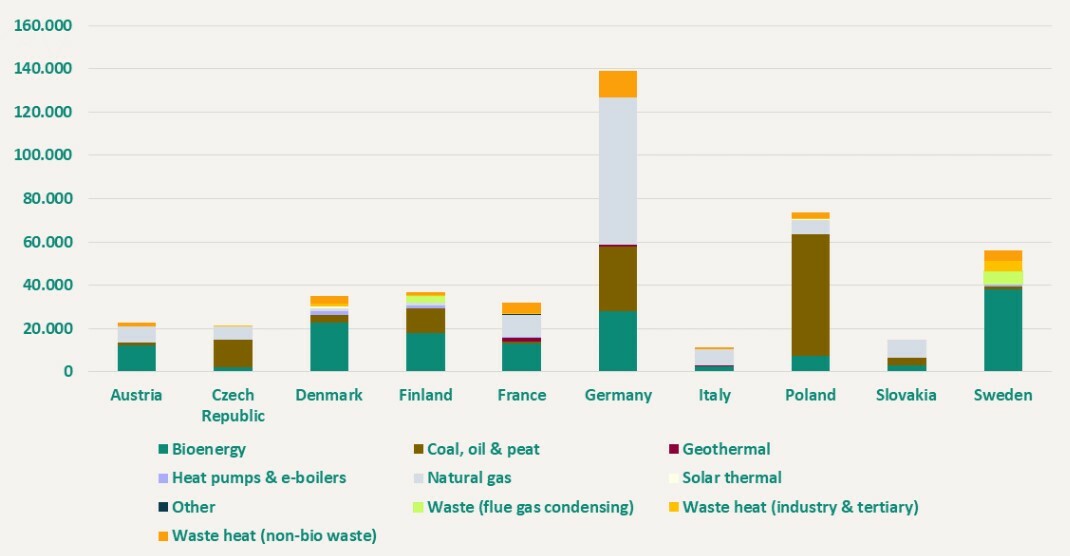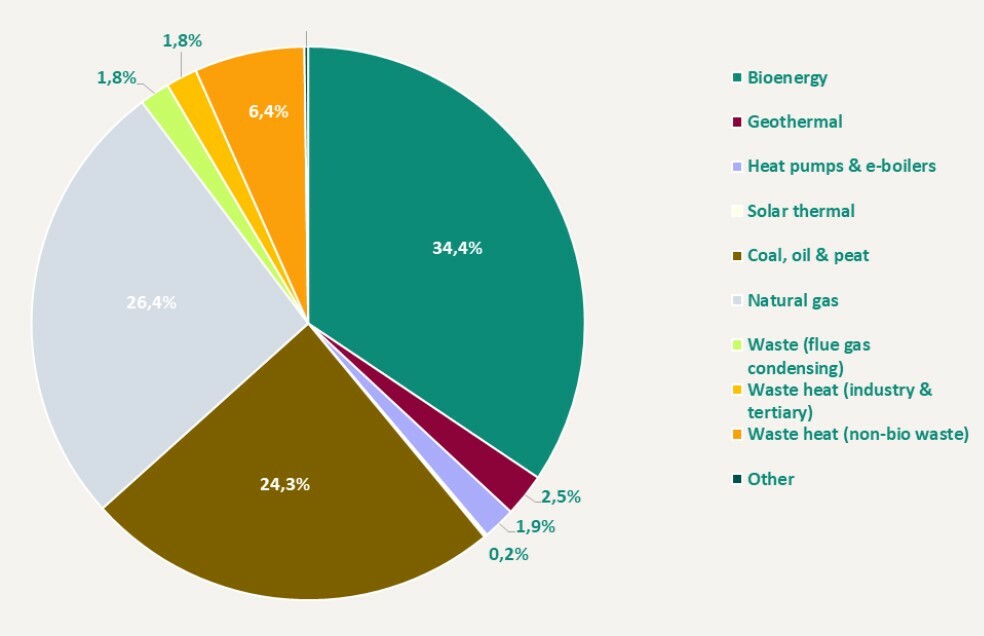District heating and cooling in Europe: the share of renewable energy
District heating and cooling networks continue to expand in Europe, further integrating renewables and waste heat sources.
In June 2024, the European association Euroheat & Power published a report taking stock of existing networks in Europe and their possible development. The data provided relate to the year 2022. This report is based on an extensive questionnaire completed by members and partners of the association.
District heating in Europe
19,037 district heating networks were identified in the countries surveyed, supplying heat to over 77.3 million people in Europe.
District heating is the most common heating solution in northern Europe. In Finland for instance, it accounts for about 45% of residential and commercial heating demands. In Denmark, widely considered a mature market, it accounts for 66% of heating demand. The total number of households connected to district heating in Denmark grew by 50,000 in 2022 and 40,000 in 2023. This trend is expected to continue in the next few years.
In Eastern and Central Europe, the share of district heating ranges from about 40% in Poland and the Czech Republic, up to 45% in the Baltic countries.

The survey shows that in 2022, 42.6% of European district heat is supplied from renewable and waste heat sources. As shown on the figure above, the fuel mix of district heating systems varies widely across countries. Nevertheless, at a European level, sustainable bio-energies represent the first renewable fuel in district heating systems (see figure below).

District cooling in Europe
There are over 200 cooling networks installed across Europe, with two-thirds in Sweden and France.
Natural cooling (from sea or river waters) is used in district cooling systems in Tampere (Finland), Copenhagen (Denmark), Paris (France) and Geneva (Switzerland).
District cooling sales in Europe increased by 8% between 2021 and 2022. In Sweden, they are expected to increase by approximately 50% by 2030 based on investment forecasts by operators. In France, Paris has the most promising developments: the network operated by Fraîcheur de Paris is set to triple network length by 2042.
For more information, visit the Euroheat & Power website.
Please contact Euroheat & Power to access the complete report.
